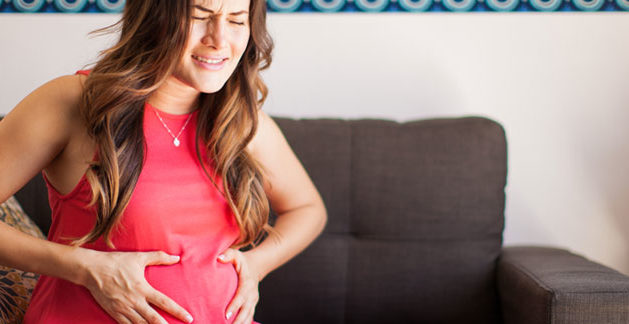Braxton Hicks & Contractions

As your body gears up for the big day, your uterine muscles start flexing in preparation for delivery, causing ‘false contractions’ or Braxton-Hicks contractions. Find out how you can distinguish between these and the real contractions.
Braxton Hicks, commonly referred to as false contractions, may start towards the middle of your pregnancy (sometimes earlier) and are common during pregnancy. Some mums say they feel like a tightening across their tummies and some even find them quite pleasant! When you feel them, practice your breathing if you need to. Not sure if you’re having Braxton Hicks contractions? Get in touch with your doctor.
What do Braxton Hicks contractions feel like?
Braxton Hicks are usually relatively painless and similar to menstrual cramps. They are irregular, and happen when your uterus tightens and then relaxes again. Towards the end of your pregnancy, they might feel a bit more painful, especially if your baby is getting head their down into position.
You’ll know if it’s the real thing because real contractions become closer to each other (with a steady pattern) and last for longer. They also are more intense and painful. On the other hand, Braxton Hicks will wear off and do not have a steady pattern. Remember, if you’re ever in doubt, please contact your doctor.
Coping with Braxton Hicks
If you find your Braxton Hicks are painful, it is maybe because you’re doing too much. Try sitting down or resting on your side. If that doesn’t work, try gently moving around a bit or relaxing in a warm bath. It’s also possible you could be a little dehydrated, so it’s very important to drink plenty of water during your pregnancy. If you feel extreme pain, consult with your doctor.
Contractions
Contractions, unlike Braxton Hicks which are false contractions (see above), have a regular pattern and rhythm to them. As you get closer to giving birth, the contractions will become more intense and will occur closer together. This information tells you more about labour contractions and what to expect. If you need more information, don’t be afraid to speak to your doctor in order to clarify all of your labour concerns.
What do contractions feel like?
Like so many other aspects of pregnancy, every woman feels contractions differently. Although they differ, they generally begin as a cramp and feel like a tight band around the top of your womb or something similar to period pains or a mild backache.
As your labour progresses, they will become more intense and frequent – it’s nature’s way of saying your baby is on the way!
What causes contractions?
You feel a contraction when a hormone called oxytocin is released which makes your womb contract. The result is a hardening and tightening of your womb which pushes your baby’s head down on your cervix and encourages it to open.
Coping with contractions
During the first stage of labour, the breathing techniques you learned at your antenatal classes or from your doctor will be very useful. But once in the hospital and the contractions become stronger, you may want something else to help such as gas and air or other pain relief. By the second stage of labour you’ll be concentrating on pushing your baby out and focusing on the end result.
Related Articles

Join Aptaclub
Get week-by-week updates on your baby’s development and your pregnancy. Receive expert advice, postal packs for your stage and much more

Know your baby’s
due date
When was the first day of your last
menstrual period?
Know your baby’s
due date
RESULT Estimated due date (40 week full term)
Need advice?
Our team of experts is ready to answer your questions and support you on your journey from pregnancy to toddler hood. For more information and relevant advice, please contact us between 9am-6pm from Sunday to Friday.




